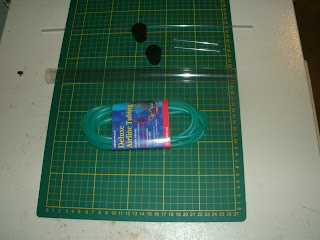 |
| Modern Book |
 |
| Older Books |
I have picked up 3 more books for my library. 2 are older and from a better time for citizen science. The other one newer but important for the amateur scientist. (I truly dislike using amateur or citizen scientist. It gives the impression that real science can not be done by them.)
1) Apparatus - 1967 by F. F. Blackwell.
This book shows you how to build various science equipment from household materials. Focusing more on the physical sciences but can be applied to the biological as well. Sections include:
Elementary electricity, Biological apparatus, Light, Machines, Air, Sound and heat, Water, Weather and soil studies.
2) Procedures in Experimental Physics - by John Strong. Originally published in 1938 republished 1986.
Another book dealing with physics. It has great explanations of certain techniques. This book and The Amateur Scientist by C.L. Stong make for great physics experiments of old. Sections include:
Glass blowing, High Vacuum technique, Optical work, Photoelectric cells, Heat and high temperature, Molds and casting, etc.
3) The Laboratory Companion: A Practical Guide to Materials Equipment and Technique - by Gary S. Coyne 2006.
This is a very useful book that discusses the different materials used in labs and how to maintain them. This is a modern book discussing modern equipment.
When I look at some of the older books I pick up I can't believe how many books existed that helped young people build their own labs and equipment. A far cry from what you find today. I am glad that I am still able to find some of them.
1) Apparatus - 1967 by F. F. Blackwell.
This book shows you how to build various science equipment from household materials. Focusing more on the physical sciences but can be applied to the biological as well. Sections include:
Elementary electricity, Biological apparatus, Light, Machines, Air, Sound and heat, Water, Weather and soil studies.
2) Procedures in Experimental Physics - by John Strong. Originally published in 1938 republished 1986.
Another book dealing with physics. It has great explanations of certain techniques. This book and The Amateur Scientist by C.L. Stong make for great physics experiments of old. Sections include:
Glass blowing, High Vacuum technique, Optical work, Photoelectric cells, Heat and high temperature, Molds and casting, etc.
3) The Laboratory Companion: A Practical Guide to Materials Equipment and Technique - by Gary S. Coyne 2006.
This is a very useful book that discusses the different materials used in labs and how to maintain them. This is a modern book discussing modern equipment.
When I look at some of the older books I pick up I can't believe how many books existed that helped young people build their own labs and equipment. A far cry from what you find today. I am glad that I am still able to find some of them.




























